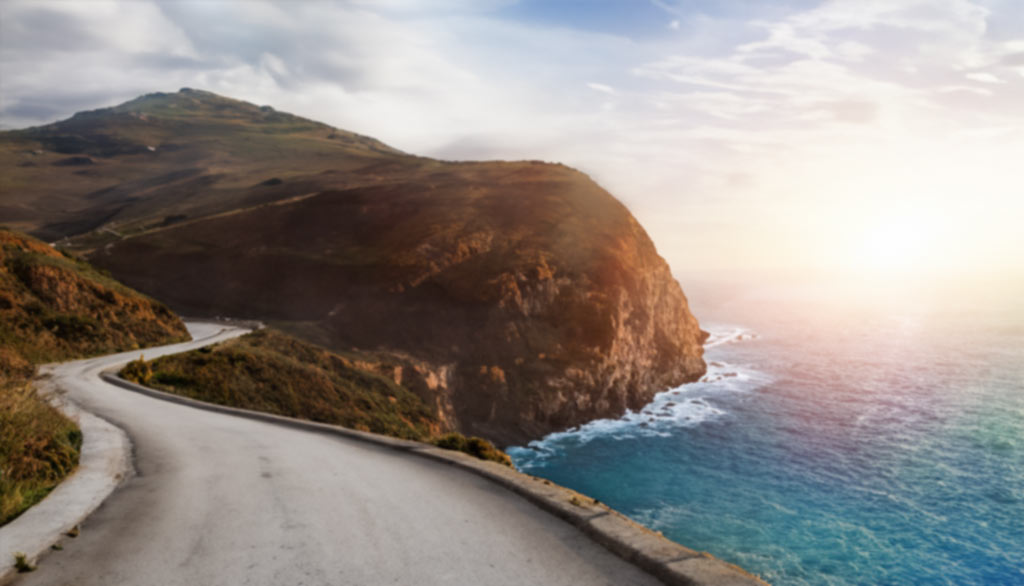Crete acts as an ideal hub for exploring nearby islands and destinations. Several islands near Crete boast unspoiled beaches, rocky coastlines, and biodiversity, making them perfect for nature lovers. These islands provide opportunities for snorkeling, hiking, and peaceful relaxation in pristine settings. Many of these areas are protected under Natura 2000 programs, preserving their ecological importance and ensuring a unique experience for visitors seeking natural beauty.
Some areas cater specifically to families, offering calm, shallow waters and safe environments for children. Activities like light hiking, snorkeling, and well-organized tours make them enjoyable for all ages, providing memorable experiences in the surroundings. Travel times range from 30 minutes to a few hours, and ticket prices vary to accommodate different budgets, from affordable excursions to luxurious packages. These transport options ensure accessibility for a wide range of travelers. The ideal time to visit these spots is between May and October when the weather is most favorable for outdoor activities.
Find below a list with the islands to visit around Crete.
- Dia Island: Dia Island, 14 kilometers (8 miles) north of Heraklion, is an uninhabited Natura 2000-protected island. Accessible via boat from Heraklion, half-day tours cost €80 ($87.20, £70.40) to €120 ($130.80, £105.60) per person, including snorkeling, meals, and activities like fishing. It is best visited from May to October.
- Antikythera: Antikythera, a 20 square kilometers (7.72 square miles). island between Crete and the Peloponnese is famous for the Antikythera Mechanism and bird migration. It can be reached by ferry from Kythera, Kissamos, Neapoli, or Piraeus. Tickets range from €13 ($14.15, £11.45) to €180 ($196.20, £158.10). May to September offers warm weather and frequent ferries.
- Spinalonga: Spinalonga, near Elounda, showcases Venetian, Ottoman, and leper colony history. Boat access costs €8 ($8.70, £7.04) to €25 ($27.20, £22) from Plaka, Elounda, or Agios Nikolaos, and guided tours. Key sites include Venetian fortress walls, Ottoman homes, and leper colony ruins. Best visited from May to October, Spinalonga lacks facilities but is ideal for a historical day trip.
- Gavdos: Gavdos, Europe’s southernmost island, offers unspoiled beaches, such as Sarakiniko and Tripiti, and mythological significance as Homer’s Ogygia. Ferries from Paleochora and Chora Sfakion cost €20 ($21.70, £17.60) to €50 ($54.40, £44). Activities include snorkeling, hiking, and stargazing. March to November is ideal for exploration.
- Paximadia: Paximadia are uninhabited islets in the Gulf of Messara, known for pebble beaches and rocky cliffs. Boats from Agia Galini cost €20 ($21.70, £17.60) to €50 ($54.40, £44) and include snorkeling and beach barbecues. Visitors can explore secluded beaches, rock formations, and clear waters. It is best for a day trip between May and October.
- Elafonisi: Elafonisi, known for pink sand beaches and turquoise waters, is a Natura 2000-protected area on Crete’s southwestern coast. Access via car, bus, or guided tours costs €5 ($5.45, £4.40) to €150 ($163.35, £132.30). Activities include relaxing on beaches, hiking, and windsurfing. Nearby accommodations and small tavernas provide services. It is best visited from May to October.
- Koufonisi: Koufonisi, 5.6 kilometers (3.5 miles) south of Cape Goudero, features sandy beaches, caves, and archaeological ruins. Boats from Makry Gialos cost €25 ($27.20, £22) to €50 ($54.40, £44) and include snorkeling stops. Visitors can explore ruins, hike, and relax on beaches. Best visited from May to October, Koufonisi suits day trips.
- Chrissi Island: Chrissi Island, 15 kilometers (9.3 miles) south of Ierapetra, boasts golden beaches, turquoise waters, and Europe’s largest Lebanon cedar forest. Ferries cost €20 ($21.70, £17.60) to €25 ($27.20, £22) with optional guided tours. Activities include snorkeling, hiking, and exploring ruins. Best visited from June to September, Chrissi requires visitors to bring supplies due to its lack of amenities.
- Gavdopoula: Gavdopoula, near Gavdos, is a Natura 2000-protected islet significant for migratory birds and marine life. Accessible only by private boats costing €50 ($54.40, £44) to €100 ($108.90, £88.10), it offers birdwatching and nature exploration. It is best visited in spring or autumn during bird migration.
- Thodorou: Thodorou Island near Chania is a Natura 2000 sanctuary for the Cretan wild goat. Boat tours cost €20 ($21.70, £17.60) to €50 ($54.40, £44) and offer snorkeling and views of Venetian fortresses. Visitors cannot disembark except during an annual celebration. The island is best visited from May to September.
- Imeri Gramvousa: Imeri Gramvousa, near Balos Lagoon, is known for its Venetian fortress and sandy beach. Boat trips from Kissamos Port cost €35 ($38.10, £30.80) to €50 ($54.40, £44) and include snorkeling. It is best visited from May to October for a day trip.
- Pseira: Pseira Island in the Gulf of Mirabello features Minoan ruins and clear waters. Boats from Tholos or Agios Nikolaos cost €25 ($27.20, £22) to €50 ($54.40, £44). Activities include exploring ruins and snorkeling. It is best visited from May to October for a historical day trip.
1. Dia
Dia Island, located 14 kilometres (8,70 miles) north of Heraklion, Crete, is an uninhabited island famous for its natural beauty, biodiversity, and historical significance. The island is shaped like a lizard and is part of the Natura 2000 conservation program. It is home to wildlife, including the Cretan wild goat (Kri-Kri), wild rabbits, and Eleonora’s falcon. Dia Island played a key role in the Minoan maritime trade and is tied to Zeus in Greek mythology.
Dia Island is accessible only by boat from Heraklion Port, Dia is typically visited via half-day sailing tours, priced at €80 ($87.20, £70.40) to €120 ($130.80, £105.60) per person. These tours include snorkeling equipment, Mediterranean meals with local wine, and activities such as fishing or paddleboarding. The boat ride takes about an hour. Full-day trips with meals and transportation cost €100 ($108.90, £88.10) to €150 ($163.35, £132.30) per person. Camping is not officially allowed, though overnight stays can be arranged at a forestry shelter near the Chapel of Analipsis.
Dia Island’s highlights include amazing beaches like Panagia Beach and Agios Georgios Bay. Historical attractions include ancient port ruins explored by Jacques Cousteau in the 1970s and the Byzantine Chapel of Agios Georgios. Hiking trails lead to viewpoints and secluded coves. A day trip is perfect for exploring Dia Island’s beaches, ruins, and trails. The best time to visit Dia Island is from May to October. Meals provided during boat tours often include fresh Cretan dishes.
2. Antikythera
Antikythera is a small Greek island between Crete and the Peloponnese, covering 20 square kilometers (7.72 square miles). The island’s famous archaeological find is the Antikythera Mechanism, a 2nd-century BC astronomical calculator. The island served as a pirate base, later fell under Venetian and British rule, and joined Greece in 1864. Antikythera is also a key bird migration point, drawing birdwatchers worldwide.
Antikythera is accessible only by ferry and can be reached from Kythera (2 hours) and Kissamos port (2 hours). Ticket prices range from €13 ($14.15, £11.45) to €50 ($54.40, £44) for shorter routes or €80 ($87.20, £70.40) to €180 ($196.20, £158.10) for longer ones. Travelers from Athens can expect a combined bus and ferry journey costing €85 ($92.50, £74.80) to €130 ($141.60, £114.10).
Accommodations on Antikythera are limited to rental rooms near Potamos port or municipal restrooms, with no hotels or official camping allowed. Traditional tavernas in Potamos serve simple, local meals. A day trip is sufficient for exploring highlights. Antikythera’s key attractions include the ancient pirate fortress at Kastro, the Lighthouse of Apolytara, and Xeropotamos Beach for swimming or snorkeling. The best time to visit is May to September when the weather is warm and ferry schedules are frequent. Cultural festivals like the Feast of St. George in April and Agios Myronas Day on August 17th.
3. Spinalonga
Spinalonga is an island near Crete’s northeastern coast by Elounda. Its Venetian fortress, Ottoman settlement, and role as one of Europe’s last leper colonies reflect Crete’s layered history. The fortress, built in 1579, defended trade routes and resisted pirate attacks, including those by Barbarossa. The Ottomans occupied it in 1715, forming a Muslim community. Spinalonga served as a leper colony where patients lived in isolation but improved their living conditions over time.
Access to Spinalonga is via boat from Plaka €8 ($8.70, £7.04) to €12 ($13.05, £10.55], Elounda €10 ($10.90, £8.80] to €15 ($16.30, £13.20), or Agios Nikolaos €25 ($27.20, £22). Organized tours often include transportation, guides, and additional stops. Entry to the island costs €8 ($8.70, £7.04), and it is free for EU citizens under 21. A visit typically costs €20 ($21.70, £17.60) to €50 ($54.40, £44) per person, with optional guided tours adding to the price.
Key attractions of Spinalonga include Venetian fortress walls, Ottoman homes, and remnants of the leper colony, such as the hospital, disinfection rooms, and cemetery. Pebble beaches with shallow waters offer swimming opportunities. Guided tours enhance understanding, though self-exploration is also rewarding. Spinalonga lacks accommodations or restaurants. The best time to visit is May to October when weather and boat schedules favor outdoor exploration. A day trip suffices to see Spinalonga’s highlights.
4. Gavdos
Gavdos, Europe’s southernmost island, lies south of Crete and is famous for its unspoiled beaches and mythological significance. The island measures 9 kilometers (5.6 miles) by 4.5 kilometers (2.8 miles). It is identified as Ogygia in Homer’s Odyssey, where Calypso held Odysseus captive, Gavdos features landmarks such as Tripiti Beach, famous for its rock arches and Europe’s southernmost point. Ferries connect Gavdos to Crete via Paleochora, Chora Sfakion, and Sougia. Trips take 2–4 hours, with round-trip tickets costing €20 ($21.70, £17.60) to €50 ($54.40, £44). Local buses link key spots such as Sarakiniko Beach, Agios Ioannis Beach, Kastri, and the lighthouse. Rental cars or motorcycles are available for easier exploration.
The center of Gavdos is the beaches. Sarakiniko Beach features soft sand and shallow waters, making it ideal for families. Accommodations include rental rooms in Sarakiniko and Kastri. Wild camping, common at Sarakiniko and Agios Ioannis beaches, is unofficially tolerated and supported by basic facilities like showers and toilets. Snorkeling and diving reveal marine life, and the clear skies provide exceptional opportunities for stargazing. Cultural attractions include the Folklore Museum in Metochi and small churches like Agios Ioannis.
The ideal time to visit Gavdos is between March and November, with temperatures ranging from 20–28°C (68–82°F) and minimal rainfall. A day trip covers highlights such as Tripiti Beach and the lighthouse, but staying 2–3 days allows for more in-depth exploration of beaches and hiking routes. Dining in Sarakiniko and Kastri includes fresh seafood and traditional Cretan dishes.
5. Paximadia
Paximadia, two uninhabited islets in the Gulf of Messara, lie 12 kilometers (7.5 miles) south of Agia Galini on Crete’s southern coast. The island is known locally as “Elephant” due to their shape. The East Paximadia offers four pebble beaches, while the West Paximadia features cliffs and colorful rock formations, making them both ideal for swimming, snorkeling, and sunbathing. Visitors can access Paximadia by boat from Agia Galini or Kokkinos Pirgos. Boat trips take 50 minutes and cost from €20 ($21.70, £17.60) to €50 ($54.40, £44) per person. Many excursions to Paximadia include snorkeling gear and beach barbecues, while luxury tours from Agia Galini feature dolphin watching and organic meals. As Paximadia has no accommodations or facilities, visitors must bring food, water, and essentials.
Greek mythology links Paximadia to Apollo and Artemis, who are said to have been born here. Activities include exploring secluded beaches, snorkeling in marine-rich waters, and hiking rocky terrain for views of the Libyan Sea. A day trip suffices to explore Paximadia’s beaches and trails. Staying in Agia Galini or Matala provides access to Crete’s southern coast. The best time to visit is May to October when warm weather and regular boat schedules favor outdoor exploration.
6. Elafonissi
Elafonisi, on Crete’s southwestern coast, is famous for its pink sand beaches and turquoise waters. It is a small island connected to the mainland by a shallow lagoon and can be reached on foot during low tide. Its ecological significance has earned it Natura 2000 protection. The area features organized sections with sunbeds and umbrellas, as well as quieter, secluded spots. Access to Elafonisi is possible by bus, car, taxi, or guided tour. Buses from Chania take 2–3 hours and cost €5 ($5.45, £4.40) to €10 ($10.90, £8.80) one-way. Driving from Chania takes 1.5–2 hours and allows for stops in mountain villages. Taxis cost €90 ($98.10, £79.20) to €150 ($163.35, £132.30) one-way. Guided tours often include visits to nearby sites like Elos village or Chrisoskalitissa Monastery.
Activities on Elafonisi include relaxing on pink sand beaches, exploring dunes, hiking to Kedrodasos Beach via the E4 European trail, and windsurfing or kite surfing. The area hosts flora and fauna, including cedar trees and migratory birds. Accommodations near Elafonisi include small hotels and guesthouses in nearby villages like Elafonisi village, Paleochora, or Kissamos. The Elafonisi Resort by the Kalomirakis Family provides sea views and is close to the beach. Dining is limited to small tavernas serving traditional Cretan dishes.
The best time to visit is May to October for warm weather and outdoor activities. Early morning or late afternoon visits avoid peak crowds, especially during the summer. A day trip suffices to experience Elafonissi, but staying overnight nearby allows enjoyment of its beauty during quieter hours.
7. Koufonisi
Koufonisi, or Lefki, is an uninhabited island 5.6 kilometers (3.5 miles) south of Cape Goudero in the Libyan Sea. The island is often called the “Delos of Crete.” The island was an important hub from the Minoan to Greco-Roman periods and is now protected under the Natura 2000 program. Koufonisi’s feature sandy beaches with turquoise waters, white rock formations, steep cliffs, caves, and desert-like terrain with rare vegetation. The island is a sanctuary for Eleonora’s falcons, designating it as an Important Bird Area. It thrived on sponge fishing and producing purple dye from the Murex gastropod, a prized commodity in ancient Greece.
Boats to Koufonisi depart from Makry Gialos port and nearby towns. Trips cost €25 ($27.20, £22) to €50 ($54.40, £44) per person and take 1 hour each way, often including stops for swimming and snorkeling. The island lacks accommodations and restaurants, so visitors must bring food, water, and essentials. Camping is prohibited. Activities on Koufonisi include exploring archaeological sites, hiking through rugged terrain, snorkeling in clear waters, and relaxing on its beaches. The chapel of Agios Nikolaos is located on the northern side. A day trip is sufficient to experience Koufonisi’s main attraction. The best time to visit is May to October when the weather is optimal, and boat services operate regularly.
8. Chrissi Island
Chrissi Island, or Gaidouronisi, lies 15 kilometers (9.3 miles) south of Ierapetra in the Libyan Sea. The island is famous for its golden sandy beaches, turquoise waters, Europe’s largest natural Lebanon cedar forest, and protected Natura 2000 site. Ferries to Chrissi Island operate daily from Ierapetra between mid-May and late October, with a 45-minute to 1-hour journey costing €20 ($21.70, £17.60) to €25 ($27.20, £22), plus a €1 ($1.10, £0.88) visitor tax. Boats depart around 10:30 AM and return by late afternoon (4:30–5:30 PM). Organized tours, costing €24 ($26.10, £21.10) to €50 ($54.40, £44), often include hotel transfers.

Activities on Chrissi Island include swimming and snorkeling in crystal-clear waters, exploring the 350,000-square-meter cedar forest with trees over 200 years old, and walking trails that reveal volcanic rock formations, fossil sites, and beaches like Belegrina Bay. Historical highlights include the Agios Nikolaos chapel, Roman tombs, ancient salt pans, and Minoan ruins.
Chrissi Island is uninhabited and has no accommodations or restaurants. Visitors must bring food, water, sunscreen, and other essentials. Due to environmental laws, camping is prohibited. Overnight stays are available in Ierapetra, which offers various hotels and guesthouses. The best time to visit is June to September, when the weather favors outdoor activities. A day trip allows for 4–5 hours to explore the Chrissi island’s highlights. During peak months (July–August), arriving early helps avoid crowds.
9. Gavdopoula
Gavdopoula, a small uninhabited islet northwest of Gavdos and part of Crete is ecologically significant and protected under the Natura 2000 program. The island serves as a key stopover for migratory birds between Africa and Europe and provides refuge for endangered species such as the Mediterranean monk seal (Monachus monachus) and the loggerhead sea turtle (Caretta caretta). The islet is covered in phrygana shrubs and maquis vegetation, preserving its untouched natural state. Access to Gavdopoula is limited to private boats or rare organized excursions from Crete or Gavdos. These trips depend on weather conditions, and the islet lacks docking facilities. Private boat charters start at €50 ($54.40, £44) to €100 ($108.90, £88.10) per person, varying by departure point and group size.
Gavdopoula offers no accommodations, restaurants, or facilities. Visitors must bring all necessary supplies, such as food and water, and camping is prohibited due to conservation laws. Activities include birdwatching, exploring the rugged terrain, and observing its pristine environment, appealing to nature lovers and researchers. A few hours suffice to explore Gavdopoula during a day trip. Spring and autumn are the best times to visit, coinciding with peak migratory bird activity and favorable boating conditions.
10. Thodorou
Thodorou Island, or Agioi Theodoroi, lies off the coast of Chania, near Agia Marina and Platanias in western Crete. The island is protected under the Natura 2000 program and a sanctuary for the endangered Cretan wild goat (kri-kri) and various bird species. Thodorou played a vital defensive role during the Venetian period. In 1574, the Venetians built two polygonal fortresses: Turluru, at the peak, and St. Theodore (or S. Francesco) lower down, to defend Platanias against pirates and invaders. During the Ottoman siege of 1645, Venetian forces destroyed their arsenal to prevent capture.
Access to Thodorou is limited to preserve its ecosystem. From April to October, boat tours operate from Agia Marina, Platanias, and Chania Old Port. Visitors can snorkel to observe marine life and explore a submerged WWII German plane near the island. Boat tour prices range from €20 ($21.70, £17.60) to €50 ($54.40, £44) per person, depending on the experience. Visitors cannot set foot on Thodorou Island except during one annual religious celebration at the church of Saint Theodore.
Accommodations are unavailable on Thodorou, but nearby Agia Marina and Platanias offer options ranging from budget hotels like Marina Sands to luxury stays like The Thodorou Palace. Dining nearby includes tavernas such as Seaside Paradise and Taverna Kritamos, serving seafood and traditional Cretan cuisine. A half-day trip suffices to enjoy Thodorou Island’s highlights. The ideal visiting period is May to September when conditions favor boat excursions.
11. Imeri Gramvousa
Imeri Gramvousa, located 20 kilometers (12.4 miles) northwest of Kissamos, near Balos Lagoon, is an uninhabited island celebrated for its Venetian fortress, natural beauty, and attractions. The fortress, built between 1579 and 1584, sits 137 meters (449 feet) above sea level. It served as a defensive stronghold against pirates and invaders and became a rebel base during the Greek Revolution in 1825, later gaining notoriety as a pirate haven.
Access to Imeri Gramvousa is exclusively by boat, with ferries departing from Kissamos Port. The one-hour trip costs €35 ($38.10, £30.80) to €50 ($54.40, £44) per person and often includes a visit to Balos Lagoon. Excursions allow about 1.5 hours on the island, enough time to hike to the fortress or relax on the beach. Key attractions include the white sandy beach with crystal-clear waters, ideal for swimming and snorkeling, and tamarisk trees offering natural shade.
Imeri Gramvousa has no accommodations or restaurants, so visitors must bring supplies or rely on food and drinks provided by excursion boats. The best time to visit is May to October when weather and boat schedules favor outdoor exploration. A day trip is sufficient to explore the fortress, beach, and shipwreck.
12. Pseira
Pseira, an uninhabited island in the Gulf of Mirabello, northeast of Crete near Tholos Beach and Kavousi, is famous for its Minoan archaeological remains and natural beauty. The island first settled during the Final Neolithic period, Pseira thrived during the Minoan Bronze Age (1700–1450 BCE) as a prosperous merchant and craftsman hub. The settlement was destroyed twice: first by an earthquake and later by the Santorini volcanic eruption.
Accessible only by boat, Pseira can be reached from ports like Tholos or Agios Nikolaos. Boat trips cost €25 ($27.20, £22) to €50 ($54.40, £44) per person and take 30–45 minutes, often including stops for swimming or snorkeling. The island has no facilities, so visitors must bring supplies. Camping is prohibited due to its status as a protected archaeological site. Key attractions include the Minoan ruins at Tholaria, featuring remnants of houses, a temple, a cemetery, and a central square. The “House of the Rhyta” is particularly notable for evidence of Minoan cult rituals involving feasting and drinking.
Activities on Pseira include hiking the rugged terrain, exploring the archaeological site, and snorkeling in clear waters rich with marine life. Nearby towns like Agios Nikolaos provide accommodations and dining options for extended stays. A day trip suffices to explore Pseira’s history and landscapes. The best time to visit is May to October, when the weather favors boat travel and outdoor activities.
What is the best way to choose an island near Crete to visit?
The best way to choose a small island near Crete depends on several factors, including your available time, budget, proximity to your base, and the needs of your travel group, such as children or elderly companions.
For a quick visit, choose islands like Spinalonga €10 ($10.90, £8.80) to €30 ($32.70, £26.40) or Chrissi €20 ($21.70, £17.60) to €50 ($54.40, £44), which are easily accessible by short ferry rides. Consider the terrain and activities—some islands require hiking or walking, Imeri Gramvousa, which may not be ideal for elderly travelers or young children.
For families, look for islands with organized facilities like beaches and shaded areas, such as Elafonisi, with its pink sands and shallow lagoon.
What islands near Crete can you visit as a daytrip?
Crete’s location makes it an excellent base for exploring nearby islands on a day trip. Find be low a list with the top islands near Crete that you can easily visit in a single day.
- Dia Island. Dia Island, located 14 kilometers (8.7 miles) north of Heraklion, is ideal for a day trip. The boat ride takes 1 hour, with daily morning departures from Heraklion Port and returns by late afternoon. It covers 12 square kilometers (4.6 square miles), and the island is small enough to explore in a few hours. Visitors can swim or snorkel in its crystal-clear waters, hike its rocky terrain, or enjoy combination tours offering paddleboarding, fishing, and a traditional Mediterranean meal served onboard. Dia’s rugged coastline, turquoise waters, and serene coves provide excellent photographic opportunities.
- Spinalonga Island. Spinalonga Island, located in the Gulf of Elounda, is another popular one-day trip destination. The boat ride varies by departure point: 10 minutes from Plaka, 20–30 minutes from Elounda, and 45 minutes from Agios Nikolaos. Regular ferries run every 30 minutes during the tourist season. Spinalonga’s highlights include the Venetian fortress, leper colony ruins, and views of Mirabello Bay. Visitors can explore the island in 2–3 hours, often combining their trip with stops in Plaka or Elounda for dining or sightseeing. The morning departure leaves ample time to explore the island before returning in the evening.
- Chrissi Island. Chrissi Island, located 15 kilometers (9.3 miles) south of Ierapetra, is famous for its golden beaches and turquoise waters. The boat ride takes 45–55 minutes, with daily morning departures from Ierapetra and returns by late afternoon. The island is compact, spanning 5 kilometers (3.1 miles) in length and 1 kilometer (0.6 miles) in width, making it easy to explore in a few hours. Visitors can relax on exotic beaches like Belegrina or stroll through its ancient cedar forest. Some tours departing from ports in Crete include snorkeling gear or onboard meals in their packages. Chrissi’s golden sands and shallow azure waters create landscapes, making it a perfect spot for photography
What islands around Crete are good to go with Kids?
Traveling with kids requires destinations that offer fun, safety, and accessibility. Several islands near Crete provide family-friendly environments with calm waters, easy paths, and engaging activities for children.
Find below a list of the top islands around Crete ideal to visit with kids:
- Chrissi Island. Chrissi Island is an ideal day-trip destination for families with children. The boat ride from Ierapetra takes 45–55 minutes, with morning departures and late afternoon returns. At 5 kilometers (3.1 miles) long and 1 kilometer (0.6 miles) wide, the island is easy to explore in a few hours. Its shallow turquoise waters and soft golden beaches, such as Belegrina Beach, provide a safe environment for children to swim and play. The island’s pinkish sand, created by crushed shells, and its ancient cedar forest offer backdrops for family photos.
- Spinalonga Island. Spinalonga Island is a perfect blend of history and scenery, making it a day trip for families with children. The boat ride varies depending on the departure point: 10 minutes from Plaka, 20–30 minutes from Elounda, or 45 minutes from Agios Nikolaos. Regular ferries operate throughout the day during the tourist season, with morning departures and evening returns. The island’s highlights include the Venetian fortress and abandoned leper colony ruins. Families can explore the island in 2–3 hours and often combine the trip with stops at nearby villages like Elounda or Plaka for dining or swimming.
- Dia Island. Dia Island is another family-friendly destination for a peaceful day trip from Heraklion. The boat ride takes 1 hour, with tours departing in the morning and returning by late afternoon. Small and manageable, the island is ideal for families with young children, offering activities such as swimming in calm bays, snorkeling in clear waters, and enjoying picnics on quiet beaches. Combination tours often include fishing or paddleboarding for added fun. Dia’s rugged coastline, turquoise waters, and secluded coves.
Which island near Crete has the best Instagram photo locations?
Santorini is a standout destination for Instagram-worthy photo locations near Crete. The island is famous for its cliffside villages, white-washed buildings with blue domes, and caldera views. Iconic spots like Oia’s sunsets, the volcanic landscape, and cobblestone streets create a dream setting for social media lovers. Santorini is more touristy and expensive than Crete. Crete to Santorini accessibility via a short flight or ferry makes it feasible for even a brief visit.
What is the best way to go from Crete to the nearby Islands?
The best way to travel from Crete to nearby islands is by ferry, with Heraklion Port offering frequent high-speed routes to Santorini, Mykonos, Paros, and other Cyclades destinations. Chania (Souda) Port primarily connects to Athens (Piraeus), while Rethymno and Sitia provide seasonal and Dodecanese routes.
High-speed ferries like SeaJets reach Santorini in 1 hour 35 minutes, while other Cyclades islands take 2 to 6 hours. Dodecanese routes, such as to Karpathos and Rhodes, take 4.5 to 9 hours. Key operators include SeaJets, Minoan Lines, Blue Star Ferries, and Golden Star Ferries.
Is it allowed to rent a car in Crete and travel to other nearby Islands?
No, it is not permitted to rent a car in Crete and travel to nearby islands with it. Most car rental companies in Crete prohibit taking rental cars on ferries or to other islands due to several reasons.
Insurance limitations are a major factor, as standard rental insurance does not cover vehicles during ferry crossings or while on other islands, leaving the renter fully liable for any damages. Instead of taking the Crete car rental to other islands, travelers are advised to rent separate cars at each destination or travel as walk-on ferry passengers and arrange rentals upon arrival.
What islands near Crete are close to Athens?
Islands near Crete that are relatively close to Athens include those in the Cyclades and the Saronic Gulf. Crete is 396 kilometers (243 miles) southeast of Athens. Ferries and flights make it possible to connect to islands along the way.
Notable options in the Cyclades include Santorini, renowned for its caldera views and iconic whitewashed buildings, accessible by ferry from both Athens and Crete. In the Saronic Gulf, closer to Athens, options include Aegina. Hydra, two hours from Athens, features car-free streets, elegant mansions, and a vibe. Poros, with greenery and neoclassical architecture.
Published on .








